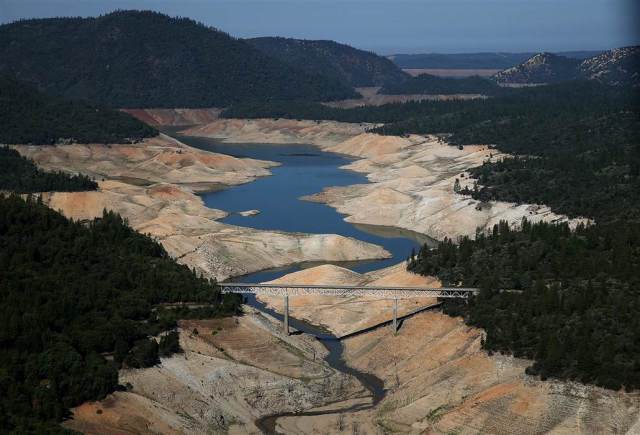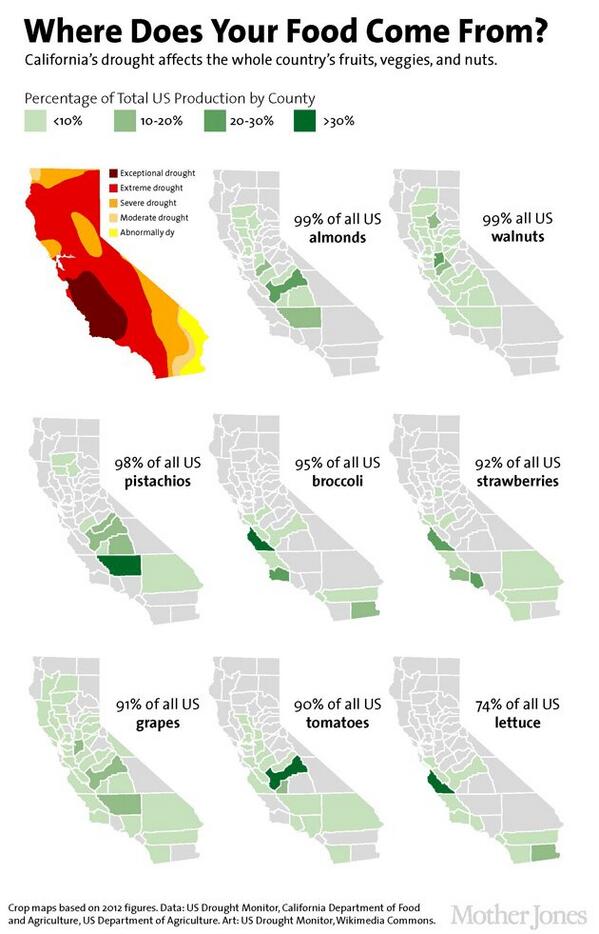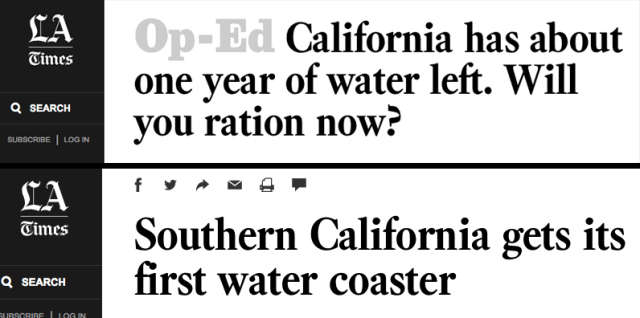
In four years the California Drought has become a background noise to the state and the country. Like a morning alarm set too quietly, the people of California have slept in, and they may now be too late.

Last week, the LA Times published three articles within one week clearly demonstrating the drowsy nature of California in regards to their pressing water shortage.
Jay Famiglietti, a University of California, Irvine, prominent water scientist at the NASA Jet Propulsion Laboratory, released an Op-Ed piece on March 12 urging Californians to ration water use. Failure to implement serious rationing procedures could result in catastrophic events.
Famiglietti warned, “Right now the state has only about one year of water supply left in its reservoirs, and our strategic backup supply, groundwater, is rapidly disappearing.”

Headline 1: California has about one year of water left. Will you ration now?
Headline 2: Southern California gets its first water coaster
Just six days after this eye opening call to action, LA Times announced, “Southern California gets its first water coaster.” Within the first paragraph stating “it’s about time.”
The water park will open this summer even though climate scientists have concluded a drought of this length and severity has not struck California for 1,200 years. Meaning a drought this fierce has not taken place since the climate warmed enough for the Vikings to sail to Greenland.

Despite the announcement of the water coaster, Famiglietti’s Op-Ed piece has drastically heightened awareness of the drought in California and the United States by attaching hard numbers, a relatable perspective, and calling out water scarcity as a home-grown issue. On Thursday, March 19, California Governor, Jerry Brown, announced an emergency $1 billion drought package. This is an important step in developing procedures to cope with the extreme weather gripping the state, but as LA Times mentioned, “no matter how much longer California’s drought lingers, politicians don’t have the power to make it rain.”
Headline 3: California’s $1-billion emergency drought relief is a tiny drop in bucket
“This is a struggle,” stated Brown during a news conference. “Something we’re going to have to live with. For how long, we’re not sure.”
The sad fact is that these articles reinforce the tragic situation that there continues to be a denial or a disconnect between facts and desires. Whether it is California, Texas or any place where there are water shortages, it is critical that we no longer live under the notion that we are living with an abundance of an essential resource or that “praying for rain” is the answer. New technologies and new approaches such as the idea of “One Water” which will be the centerpiece of The Water Council’s Water Summit in June must be explored and implemented. It is imperative for all of us to clearly understand that regardless of where we live and work our use and management of water has human, economic and security ramifications.